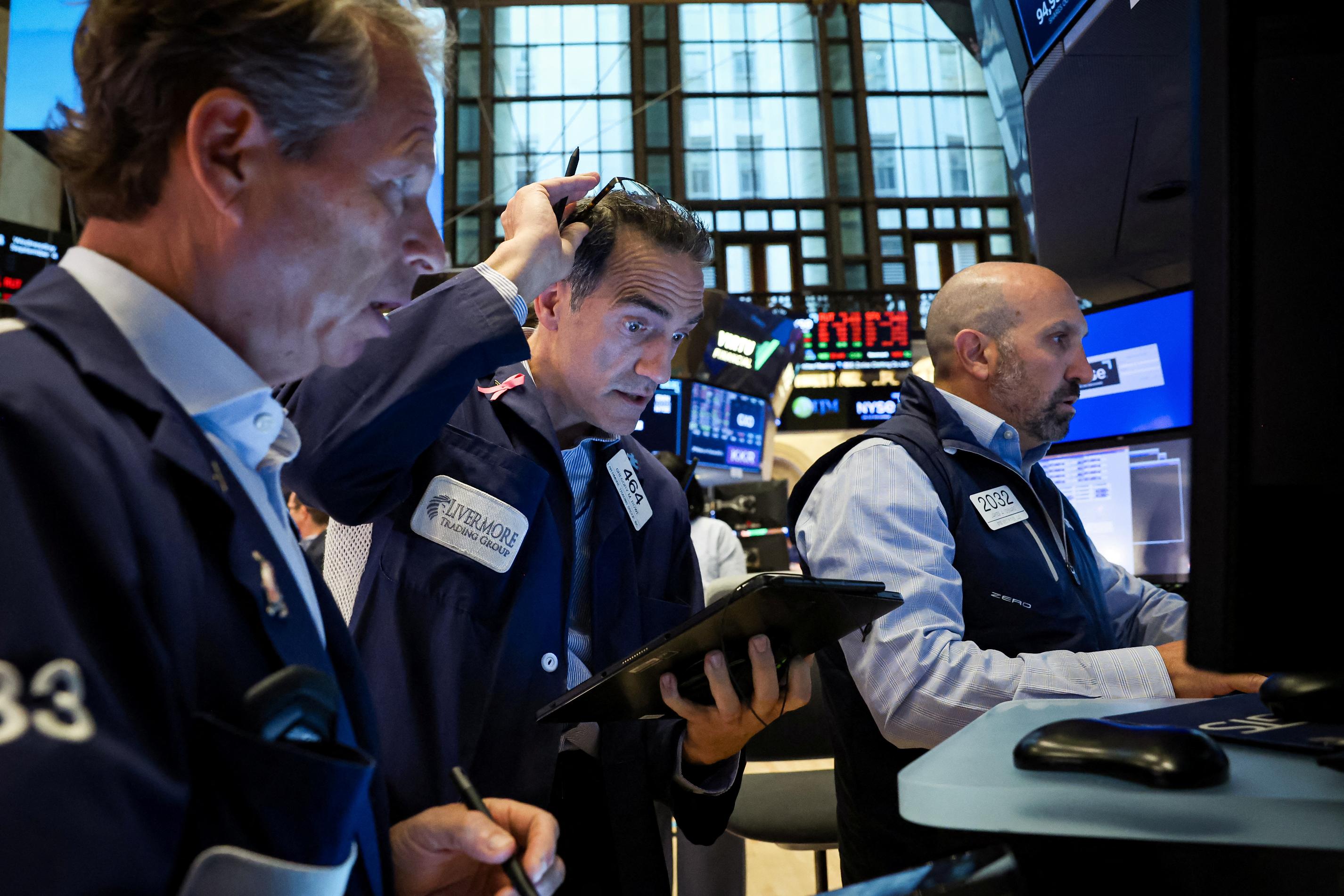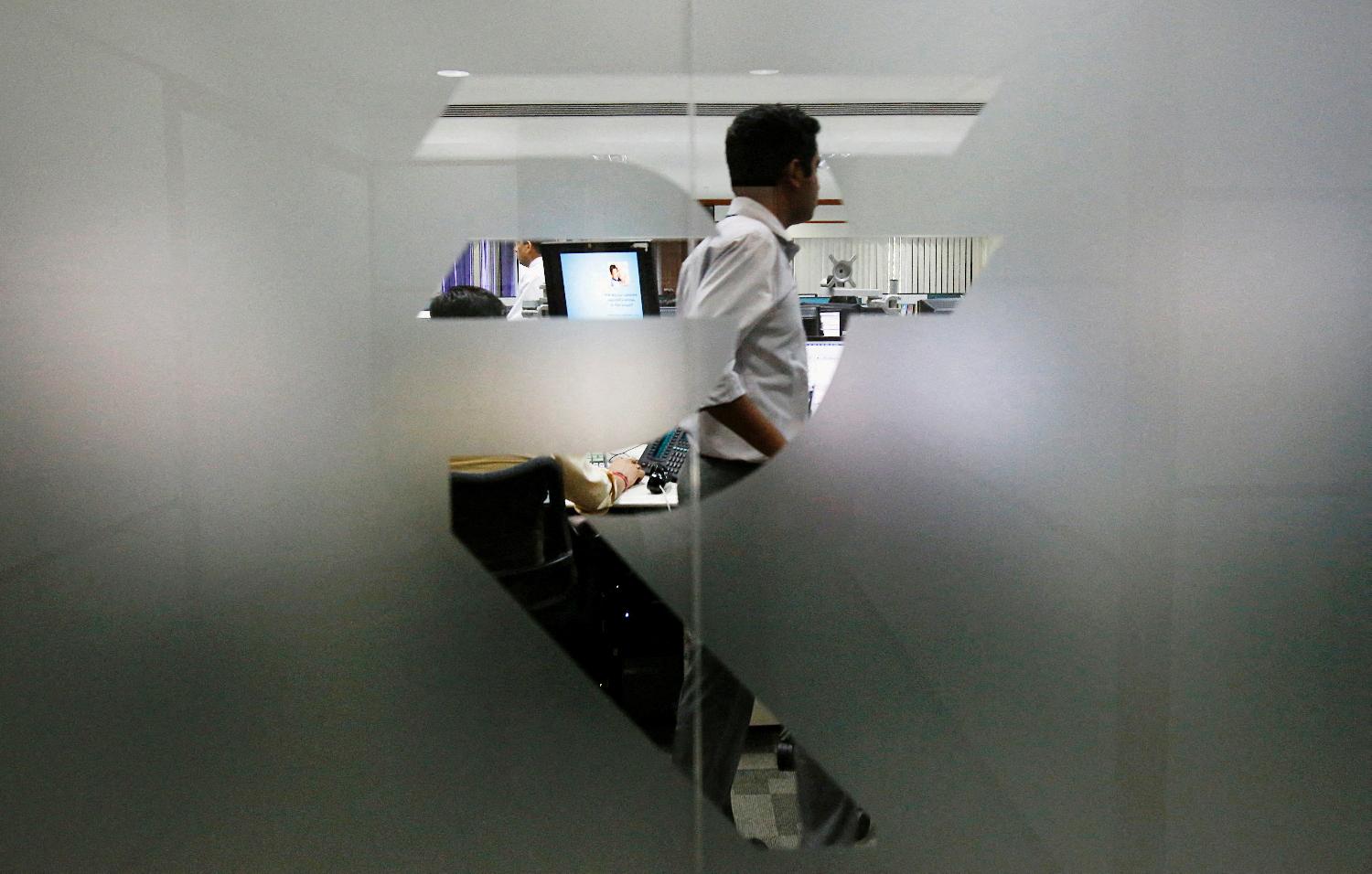
2024-09-09 10:39
A look at the day ahead in U.S. and global markets from Mike Dolan Wall Street futures have found their feet after Friday's exaggerated market reaction to an otherwise middling employment report - with Apple's new iPhone and Tuesday's presidential candidates' debate next up on the radar. The August payrolls report was modestly weaker than forecast, even if a significant improvement on July. Downward revisions to prior months softened the picture a bit more. But the report was neither strong enough to completely dispel slowdown and recession fears for next year nor was it seen to be weak enough to nudge the Federal Reserve into a jumbo 50-basis-point interest rate cut this month. Top Fed policymakers Christopher Waller and John Williams underscored expectations that a Sept. 18 cut is coming - the former even said the easing cycle should be 'frontloaded'. But neither seemed panicked enough to suggest 50 bps was needed yet. By the close, the S&P500 (.SPX) , opens new tab was down 1.7% - clocking a 4.5% loss for the week that now stands as its worst since March 2023 and underlines yet again the seasonal downdraft that typically comes with September. Following suit in a more measured fashion, Asian markets slipped early on Monday too. And yet despite markets scaling back the expected size of this month's Fed rate cut, there's been no change to 112 bps of Fed rate cuts priced in by year-end, nor the 235bps seen over the next 12 months. Ten-year Treasury yields hit on Friday their lowest since June last year and two-year yields their lowest since March 2023. Both firmed up a tad on Monday ahead of the week's auctions of $119 billion of 3-, 10- and 30-year Treasury coupons. U.S. stock futures and European bourses bounced back smartly today ahead of another crammed week - a likely second European Central Bank rate cut of the year on Thursday, Apple's release of its new AI-infused iPhone on Monday and Tuesday's televised face-off in the White House race. The euro was on the backfoot ahead of the ECB decision, with likely cuts to the central bank's GDP and inflation forecasts on Thursday keeping some hopes alive of a third rate reduction as soon as next month. Even though the Fed seems to have pivoted clearly toward the employment side of its dual mandate rather than the inflation one, the August CPI inflation report on Wednesday will be important to assess the degree of ongoing disinflation. On that score the deflationary pressures from overseas remain powerful, with China recording deep annual producer price deflation of 1.8% once again last month and a meagre consumer price inflation rate of just 0.6% that also missed forecasts. Commodity markets are doubling down on that disinflation. Even though oil prices had a toehold on Monday, U.S. crude remains below $70 per barrel after hitting a 15-month low on Friday and is still recording year-on-year declines of more than 20%. U.S. market inflation expectations are evaporating fast. The 10-year 'breakeven' inflation view embedded in inflation-protected Treasuries is now at just 2.04% - its lowest since January 2021. The two-year equivalent is just 1.87% - well below the Fed's 2% target and raising the risk that significant undershoot of that goal may be in store. The New York Fed publishes its August survey of household inflation expectations later on Monday. Back in politics, the U.S. election race heats up again this week with Tuesday's first televised debate between U.S. Democratic presidential candidate Kamala Harris and Republican challenger Donald Trump. The stakes remain high as national opinion polls show the two neck and neck again after a brief period in which Harris gained the ascendancy following her nomination. A poll conducted by The New York Times and Siena College released on Sunday showed the two effectively tied, with Trump up one percentage point - 48%-47% - over Harris. The PredictIt betting site has them in a dead heat again too. In Europe, former ECB chief and Italian Prime Minister Mario Draghi delivered his long-awaited report into reforming Europe's economy, urging the European Union to adopt a more coordinated industrial policy, more rapid decisions and massive investment if it's to keep pace with the United States and China. In company news, all eyes will be on Apple's new iPhone series later on Monday. Its stock (AAPL.O) , opens new tab was indicated up 1.6% ahead of the bell, alongside most of the other Big Tech megacaps. The Financial Times newspaper reported on Saturday that the latest iPhone's A18 chip, which is set to be unveiled at Monday's event, has been developed using Arm's newest V9 chip design. And Boeing shares (BA.N) , opens new tab rose 3% in U.S. premarket trading after the planemaker reached a tentative deal with a union in the U.S. Pacific Northwest that could avoid a possible crippling strike later this week. Key developments that should provide more direction to U.S. markets later on Monday: * New York Fed's inflation expectations survey, US August employment trends, July consumer credit; Mexico August inflation * Apple unveils new iPhone series * US corporate earnings: Oracle * US Treasury sells 3-, 6-month bills (This story has been corrected to fix the day to Monday, not Friday, in paragraph 26) Sign up here. https://www.reuters.com/markets/us/global-markets-view-usa-2024-09-09/

2024-09-09 10:25
MUMBAI, Sept 9 (Reuters) - The Indian rupee ended little changed on Monday, as dollar sales by foreign banks offset the drag from Asian peers that fell due to weak risk appetite as investors awaited clarity on the size of a likely U.S. rate cut this month. The rupee ended the session at 83.9550 against the U.S. dollar, nearly unchanged from its close at 83.9475 on Friday. Mild dollar sales from foreign banks supported the local currency, while overall trading activity was relatively subdued, a senior trader at a foreign bank said. Routine interventions by the Reserve Bank of India (RBI) to hold the rupee above the 84 mark have also made traders wary of wagering on further weakness in the currency. Concerns over the U.S. growth outlook, following a mixed jobs report on Friday, weighed on Asian currencies, which declined 0.1% to 0.9%. The dollar index was up 0.3% at 101.5. The jobs report showed that while the U.S. economy created fewer than expected jobs in August, the unemployment rate dipped to 4.2%. Attention has turned to the U.S. Presidential debate on Sept. 10, which "could lead to increased sensitivity to polling shifts afterward", Charu Chanana, head of FX strategy for Saxo, said in a note. "Neither of the candidates' policy plans are likely to hint at moves to rein in the ballooning fiscal deficit, and this could be marginally USD-positive," Chanana said. Focus this week will also be on the U.S. consumer inflation print due on Wednesday. The data is expected to shape investors' bets on whether the Fed will cut rates by 25 or 50 basis points next week. Sign up here. https://www.reuters.com/markets/currencies/rupee-ducks-risk-aversion-pressure-asian-peers-end-flat-2024-09-09/

2024-09-09 07:57
NAPERVILLE, Illinois, Sept 8 (Reuters) - Speculators last week staged the largest round of short covering in four months across U.S. grains and oilseeds, though the collective mood remains the most bearish ever for the date. This is anchored by a massive fund short in Chicago soybeans, resulting from ample global supplies and what had been poor export demand for U.S. beans. But demand for U.S. corn has been decent and investors have cut back on their price pessimism. December CBOT corn futures jumped more than 4% in the four-day week ended Sept. 3 after hitting a contract low of $3.85 per bushel in the prior week. That represented the lowest price for most-actively traded corn futures since October 2020. In the week ended Sept. 3, money managers slashed their net short position in CBOT corn futures and options by about 66,000 contracts to 176,211 contracts, their least bearish stance since May. While short covering was dominant, there was also a significant uptick in gross long positions during the week. Funds' new net short in corn is only half as large as their all-time record set in July, though it ties with 2016 for the date's largest net short. But in soybeans, funds' massive net short is still safely a record for the date and twice as large as the previous high set in 2019. That is despite last week's short covering and a recent flurry of U.S. export sales. Money managers through Sept. 3 cut their net short in CBOT soybean futures and options to a nine-week low of 154,096 contracts, down more than 22,000 on the week. But unlike in corn, there was a slight reduction in gross soybean longs. CBOT November soybeans rose more than 2% through Sept. 3, continuing to build from their mid-August low of $9.55 per bushel. Investors went into the U.S. summer growing season already carrying large short positions in corn and soybeans, and their early acceptance of bumper harvests for both crops has cut back on price volatility as they did in the past few years. The market this week will be watching for the U.S. Department of Agriculture’s monthly supply and demand reports on Thursday. Analysts expect the record U.S. soybean crop to hold, though corn output is seen slightly contracting. December corn and November soybean futures over the last three sessions both fell fractionally but traded above the $4- and $10-per-bushel marks, respectively. WHEAT AND SOY PRODUCTS Money managers covered short positions in CBOT wheat futures and options through Sept. 3, cutting their net short to a 13-week low of 42,624 contracts, down more than 13,000 on the week. CBOT December wheat hit its lifetime low of $5.20-3/4 per bushel in the prior week but surged nearly 6% through Sept. 3. Futures were unchanged over the subsequent three sessions. Soybean meal is the only major U.S. grain or oilseed in which funds remain bullish, having held a net long since mid-April. That almost went away in mid-August when futures notched new lows, but speculators have been net buyers in the weeks since. Money managers through Sept. 3 boosted their net long in CBOT soybean meal by more than fourfold to 23,171 futures and options contracts, evenly split between new longs and exiting shorts. But short covering, the week’s overall theme, was most prominent in CBOT soybean oil. Money managers slashed their net short by almost 21,000 contracts to 47,527 futures and options contracts, though that remains heavily bearish in a historical context. Karen Braun is a market analyst for Reuters. Views expressed above are her own. Sign up here. https://www.reuters.com/markets/us/funds-actively-cover-cbot-corn-soy-shorts-us-demand-picks-up-2024-09-09/

2024-09-09 07:50
KYIV, Sept 9 (Reuters) - Ukraine's energy ministry said on Monday that Russian forces had attacked energy facilities in seven regions in the space of 24 hours, in a statement on the Telegram messaging app. The statement did not detail the scale of damage at the facilities. Sign up here. https://www.reuters.com/world/europe/ukraine-says-russia-attacked-energy-facilities-seven-regions-2024-09-09/

2024-09-09 07:27
Trafigura sees risks of oil prices falling to around $60/bbl, Gunvor says $70/bbl is fair Global oil oversupply to continue China demand is soft, global commodity traders say SINGAPORE, Sept 9 (Reuters) - Global commodity traders Gunvor and Trafigura anticipate oil prices may range between $60 and $70 per barrel due to sluggish demand from China and persistent global oversupply, executives told a conference on Monday. Oil prices have been under pressure due to concerns about waning demand in key economies China and the U.S. - despite earlier expectations of summer demand being supportive - dipping after touching over $90 a barrel earlier this year. Market relief came after the Organization of the Petroleum Exporting Countries and its allies, the group known as OPEC+, agreed last week to delay a planned oil output increase for October and November. However, commodity traders warn this relief may be short-lived. "The market got a little bit of sugar candy for two months, but really very little," Ben Luckock, global head of oil at Trafigura, told the Asia Pacific Petroleum Conference (APPEC), adding that oil prices may fall 'into the $60s sometime relatively soon.' "The market wants to know...that OPEC is not going to bring those barrels back or at best is going to bring it back much slower and on a deferred basis." Oil's fair value is $70 per barrel as there is more oil currently produced globally than consumed and the balance is set only to worsen over the next few years, said Torbjorn Tornqvist, co-founder and chairman of energy trader Gunvor. "The problem is not in OPEC, because they've done a great job to manage this," Tornqvist said. "But the problem is that they don't control where the growth is right now outside OPEC, and that's substantial." Oil futures jumped by a dollar in early Monday trade as a potential hurricane system approached the U.S. Gulf Coast. Later, West Texas Intermediate crude futures traded around 70 cents higher at $68.38 a barrel and Brent crude futures at $71.75 a barrel, by 0628 GMT. OVERSUPPLY, SOFT CHINA DEMAND The International Energy Agency (IEA) expects oil supply growth this year to reach 770,000 barrels per day (bpd), boosting total supply to a record 103 million bpd. That growth is set to more than double next year to reach 1.8 million bpd, with the United States, Canada, Guyana and Brazil leading gains. "Growth is slowing in the U.S. but not coming to a halt and still significant, which presents another challenge for OPEC+ decision-making," Jim Burkhard, vice president of research at S&P Global Commodity Insights, told the APPEC conference. Burkhard sees OPEC+ increasing oil supply next year for the first time since 2022 and even if the group decides not to do so, spare oil production capacity globally, including over 5 million bpd in the Middle East, is set to pressure prices. "The cycle of oil supply surplus continues. It will come to an end, but that will be in 2026 or beyond," he said. Soft demand in China, the world's second-biggest economy, is also worrying markets, Trafigura's Luckock said, adding that some market players believe Beijing may have more economic stimulus in reserve depending on the outcome of the U.S. presidential elections in November. "There are plenty of examples of what the Chinese central government is doing to help the economy at the moment, but none of it is this big bang headline that sometimes the market wants," Luckock said. Sign up here. https://www.reuters.com/business/energy/sp-global-expects-opec-start-oil-output-increases-next-year-2024-09-09/

2024-09-09 07:01
SINGAPORE, Sept 9 (Reuters) - China's shift towards lower-carbon fuels and a sluggish economy are dampening oil demand growth in the world's largest crude importer, speakers at the APPEC conference said on Monday. China's annual demand growth has slowed from around 500,000-600,000 barrels per day (bpd) in the five years before the COVID-19 pandemic to 200,000 bpd now, said Daan Struyven, head of oil research at Goldman Sachs. That is primarily due to the adoption of electric vehicles and the use of trucks powered by liquefied natural gas (LNG) instead of diesel, Struyven said. "China is super focused on becoming a leader in the global (energy transition) sector by pushing the supply side, which is making the alternatives cheaper," Struyven said. He added that China has also been reducing its reliance on imports of fossil fuels, which is also negative for oil prices. During the second quarter, China's oil demand was especially weak, weighed by lower refinery output and a slower economy. "There's the transition component, which is moving trucks into LNG, and then there's the economic weakness," said Jeff Currie, chief strategy officer of energy pathways at U.S. investment giant Carlyle Group. Roughly 150,000 to 200,000 barrels per day of lost demand growth is due to energy transition, while the rest is due to economic weakness and oil inventory destocking, Currie said. This year, concerns about weak oil demand in China, as well as plans by OPEC+ producers to unwind supply cuts, have exerted downward pressure on oil prices, which recently hit more than one-year lows. "Despite a fourth-quarter 2024 bump, Chinese liquids demand growth is in lower gear – and will stay that way," said Jim Burkhard, vice president, research, at S&P Global Commodity Insights. Sign up here. https://www.reuters.com/business/energy/appec-transition-cleaner-fuels-seen-dragging-chinas-oil-demand-growth-2024-09-09/
